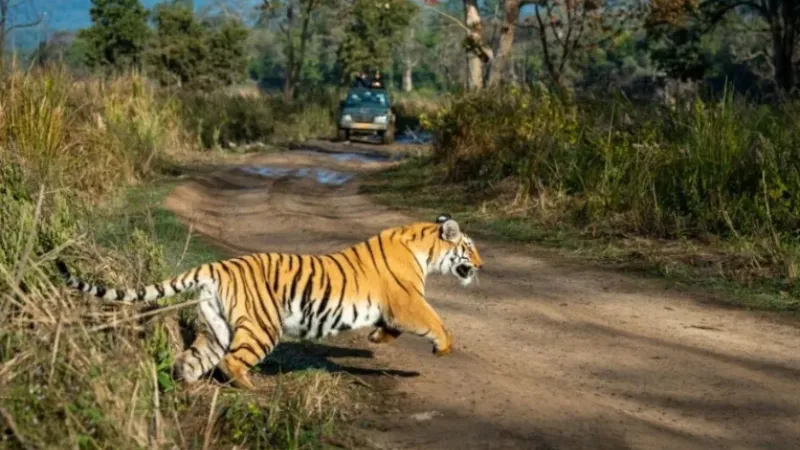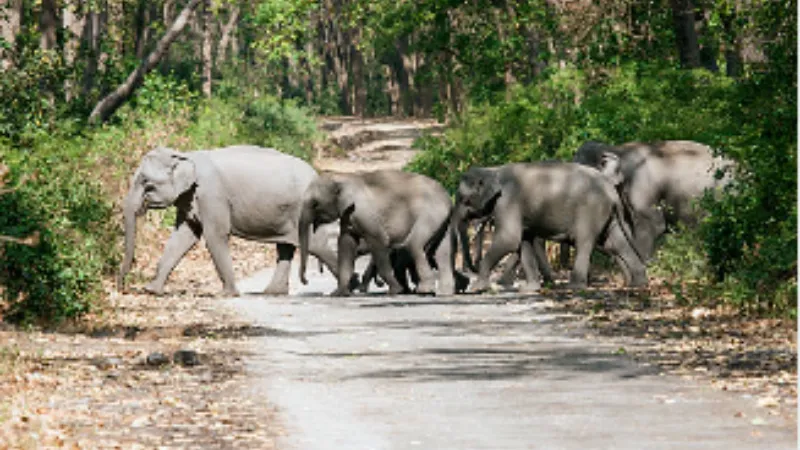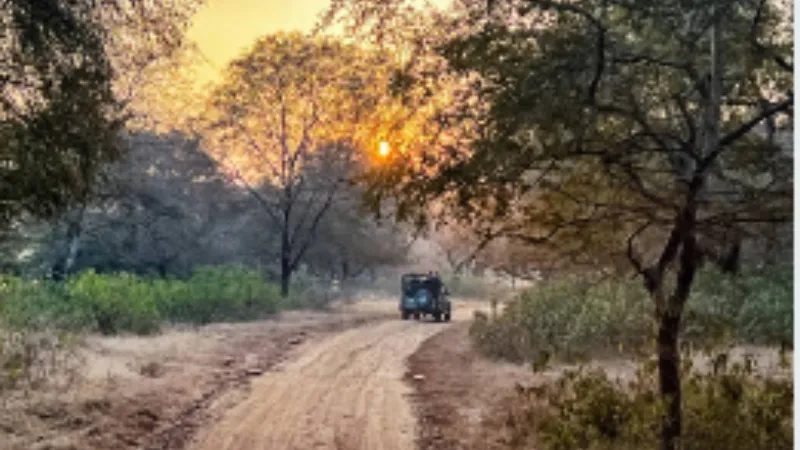
To protect the ecology, the national government designates a certain area as a national park. A national park may be created for the enjoyment of the general public, for scientific or historical reasons, or both. The majority of the natural habitats found in national parks, along with the flora and fauna that inhabit them, are preserved.
Read Also – 30 Best Summertime Destinations in India
According to the IUCN (International Union for Conservation of Nature), India’s national parks are classified as class II protected areas. In the region now known as Jim Corbett National Park in Uttarakhand, India’s first national park was founded in 1936. India has only five national parks by 1970. In 1972 and 1973, respectively, India launched Project Tiger and the Wildlife Protection Act to protect the habitats of the animals whose survival depends on conservation. India had 106 national parks as of December 2020, which accounted for 1.35 percent of the country’s total land, or 44,378 km2 (17,134 sq mi), according to the National Wildlife Database. In addition, 75 new National Parks are suggested by the Protected Area Network Report to cover an additional 16,608 km2 (6,412 sq mi). When the aforementioned study is fully implemented, there will be 176 more parks.
“An area that the state government may designate as a national park because of its ecosystem, faunal, floral, morphological, or zoological association or importance, necessary to safeguard develop, or preserve wildlife here anyway or in its environment, whether it is inside or outside of a sanctuary,” states the Indian Ministry of Environment & Forests in reference to national parks. Except for activities authorised by the state’s Chief Wildlife Warden in accordance with the restrictions outlined in Chapter IV of the WPA 1972, no human activity is permitted within the national park.
The Top 5 National Parks in India
1. Jim Corbett National Park

A unique slice of Indian history, the Jim Corbett National Park is home to an abundance of birds, reptiles, animals, and other wild creatures. This national park, which is located in the Nainital area of the state of Uttarakhand, attracts tourists from all over the world with its profusion of rare wildlife, which includes elephants, tigers, and many other species.
This Special Tiger Territory is the birthplace of Project Tiger, an effort in India to save some of the most endangered species on the planet as well as the Royal Wild Animal of India, the tiger. The largest Corbett Tiger Reserve, part of the Jim Corbett National Park in Uttarakhand’s Nainital district, serves as the base for Project Tiger. The magnificent scenery of Corbett is widely recognised for its profusion of tigers. Originally established as Hailey National Park in 1936, Corbett is currently the oldest and most well-known national park in India. It is also well-known for housing the 1973 launch of Project Tiger.
The Corbett National Park is always open to visitors from the Jhirna district and is a refuge for wildlife enthusiasts. The central zone (gate) of the National Park is Dhikala, which opens on November 15. The Bijrani zone will be open for entry from the middle of October. The routes to Bijrani and Dhikala have been swept away during the rainy season. For this reason, some places are closed off at this time.
Summer is the best season to watch animals as they are out and about in the forest. Visitors may experience the entire gamut of forest activities during the winter. The best time of year to see birds and tigers is in the winter. For those who like peaceful trekking and strolling while taking in the park’s diverse vegetation, the monsoon season is perfect. Jhirna and a few other buffer zones remain accessible this season. To see the entirety of Jim Corbett National Park, November 15 to June 15 is the best time to come. It is forbidden to drive in Corbett at night since the zones close at sunset.
2. Ranthambore National Park

Ranthambore is one of the biggest and most well-known national parks in Northern India. Situated in the Sawai Madhopur district of southeast Rajasthan, the park is 130 kilometres away from Jaipur. 1,334 km2 makes up the whole area (515 sq mi). Their boundaries to the north and south are established by the Banas and Chambal rivers. The park’s name comes from the famed Ranthambore Fort, which is situated there. When Sawai Madhopur Game Sanctuary (109 sq mi) was established in 1955, the first 282 km2 of Ranthambore National Park was created. It was designated as a Project Tiger reserve in 1973 and became a national park on November 1, 1980. In the nearby woodlands, the Sawai Man Singh and Keladevi Sanctuary was founded in 1984. The adjacent Keladevi Sanctuary in the north, Sawai Mansingh Sanctuary in the south, and more forests were added to the Tiger Reserve in 1992.
Once considered one of the most famous and well-known hunting grounds for the Maharajas of Jaipur, the scenery of Ranthambore National Park is today a well-known tourist destination that has captured the interest of many wildlife photographers and enthusiasts.
Read Also – 15 Summer Skincare Tips
The Ranthambore National Park is open to visitors during the hours set aside for safaris from October 1 to June 30 of each year. From July through September, the park is closed to visitors due to the rainy season. November through April are the best months to visit Ranthambore because of the pleasant weather and the ease with which you may observe the animals. From October through June, there are two safaris per day, one departing early and the other in the late afternoon. The park is verdant and teeming with wildlife following the rain.
3. Kanha National Park

The Jungle Book by Rudyard Kipling was set in Kanha National Park. several lakes, streams, open grasslands, sal and bamboo forests, and several endangered animal species have been preserved as a result of the park’s considerable study and conservation efforts. The park is well-known for its barasingha (swamp deer), tigers (the chance of seeing one has increased dramatically in recent years), and a variety of other animals and birds. It would be appreciated by nature enthusiasts. With a core area of 940 square kilometres (584 square miles) and a surrounding area of 1,005 square kilometres (625 square miles), this park is one of the biggest national parks in India. Southeast of Jabalpur is the state of Madhya Pradesh. There are three gates in the park. The main entry, Khatia Gate, is 160 kilometres (100 miles) away from Jabalpur via Mandla. Mukki can be accessed from Jabalpur in about 200 kilometres via Mandla-Mocha-Baihar. The park’s buffer zone can be driven past between Khatia and Mukki. The Sarhi Gate is around 8 kilometres from Bichhiya on National Highway 12, which runs through Mandla and is about 150 kilometres from Jabalpur. Kanha National Park also includes the buffer zones of Khatia, Motinala, Khapa, Sijhora, Samnapur, and Garhi.
4. Periyar National Park

The best-protected reserve area in India is the 257 square mile Periyar National Park in Thekkady, Kerala. Beautiful elephants, majestic tigers, an abundance of fish, reptiles, birds, and other creatures may all be found in this magnificent park. The park is well known for its peace, verdant surrounds, and remarkable blend of adventure and beauty. It is maybe the biggest national park in India. Of the 925 km2 (357 sq mi) total protected area, 305 km2 (118 sq mi) are now part of the Periyar National Park, which was created in 1982.
The variety of activities in the area draws thousands of visitors each year. Boat trips, jungle excursions, and ecotourism activities including border hiking, jungle patrol, bamboo rafting, bullock cart tours, Periyar Tiger Trail, jungle camp, and jungle inn are among the options available to you. The months of September through June are the best times to visit Periyar National Park. The Periyar and Pamba, two significant rivers in Kerala, receive the majority of their watershed from the park. It serves as a storehouse for rare, indigenous, and threatened flora and fauna. The rainy monsoon season brings with it an abundance of luxuriant foliage that covers the national park from late September to early October. The weather is still lovely and the scenery is getting greener.
5. The Great Himalayan National Park

Many animal species can be found in abundance in the Great Himalayan National Park, which is located in the Kullu region of Himachal Pradesh. Part of the Far Western Himalaya in Himachal Pradesh, India, is the Great Himalayan National Park (GHNP), which is situated in the Banjaar Subdivision of the Kullu District. The Great Himalayan National Park was added to the UNESCO World Heritage Sites list in June 2014.
The park is a wonderful place for visitors to escape the hustle and bustle of the city and a sanctuary for those who love the outdoors. It was designated as a national park in 1999. More than 375 species of fauna, including 181 bird species and 31 animal species, are currently supported by it. There are a few fairs held in this beautiful park in April, May, August, and September. The park is 1171 km2 in size, with elevations ranging from 1500 to 6000 m. In 1984, it was established. Roughly 31 mammals, 181 birds, 3 reptiles, 9 amphibians, 11 annelids, 17 mollusks, and 127 insects can be found in the Great Himalayan National Park. The best seasons to visit the Great Himalayan National Park are summer, which runs from April to June, and winter, which runs from December to February.
About Latturam – latturam.com is a platform to know some facts about nature, history, health, environment and our lifestyle.
Read Also – The Top 10 Summer Fruits for a Reviving Diet



Comments